Scientists are terrified they've identified the world's next human pandemic
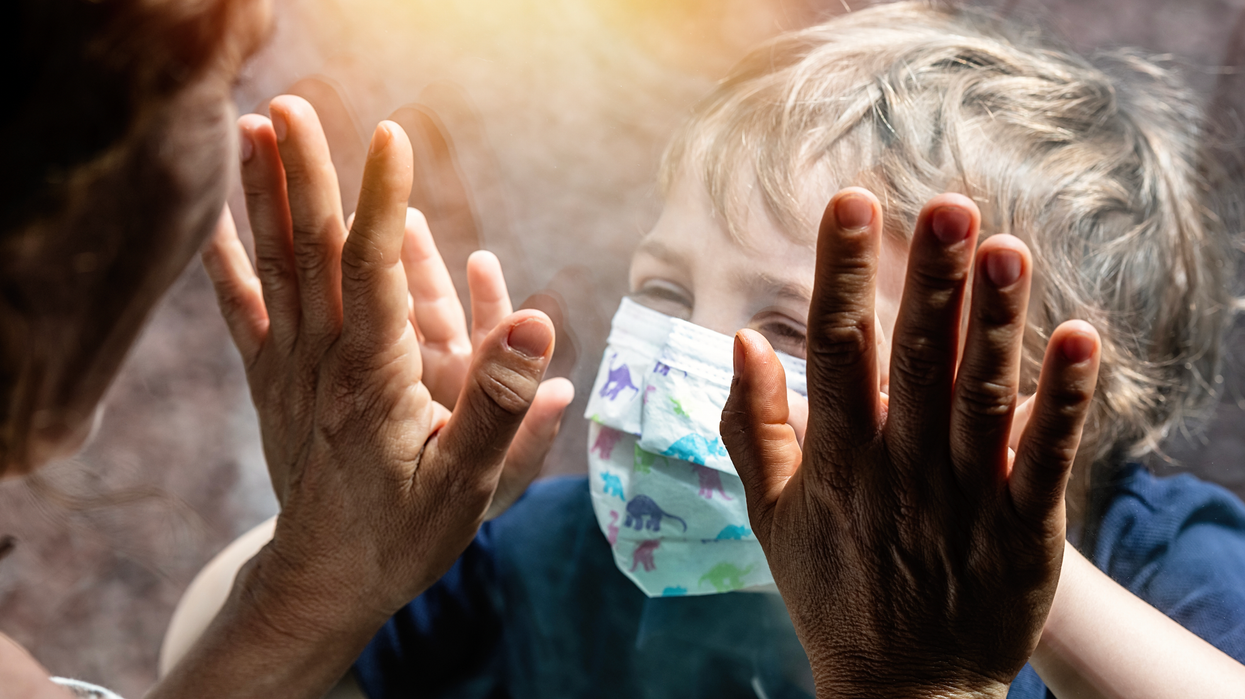
H5N1 has jumped from birds to mammals and has been detected in humans, although cases have been mild and isolated
|Getty Images

With H5N1 surging in cattle across America, our Health Editor Adam Chapman asks virologists: Is the world ready for a new human pandemic?
Don't Miss
Most Read
Latest
For decades, highly pathogenic avian influenza H5N1 has infected birds and a small number of humans.
The deadly strain of bird flu was first detected In 1996 in wild geese in southeast China.
The following year, the virus spread through live poultry markets in Hong Kong, infecting 18 humans, six of whom died.
H5N1 re-emerged in 2003, causing poultry outbreaks across Asia, and around 2005 wild birds began spreading the virus to avian populations in Africa, the Middle East, and Europe.
The variant started spreading ferociously in 2021, killing hundreds of millions of domestic and wild birds worldwide.
Around this time, H5N1 jumped to various mammals.
In March of this year, the virus found a new host: cattle.
This is the first time that these avian viruses have been identified in dairy cows.
A multistate outbreak in cattle and poultry is currently being reported in America.
Since April, four dairy workers have tested positive for bird flu, or H5N1. The cases are linked to dairy herds in 13 states.
Last week, the Centers for Disease Control and Prevention (CDC) confirmed another six poultry workers - and a seventh case is pending.
These human cases have all been mild and isolated. Patients have presented with typical flu symptoms such as fever and chills.
The spillover from cows to humans is nonetheless concerning on several fronts.
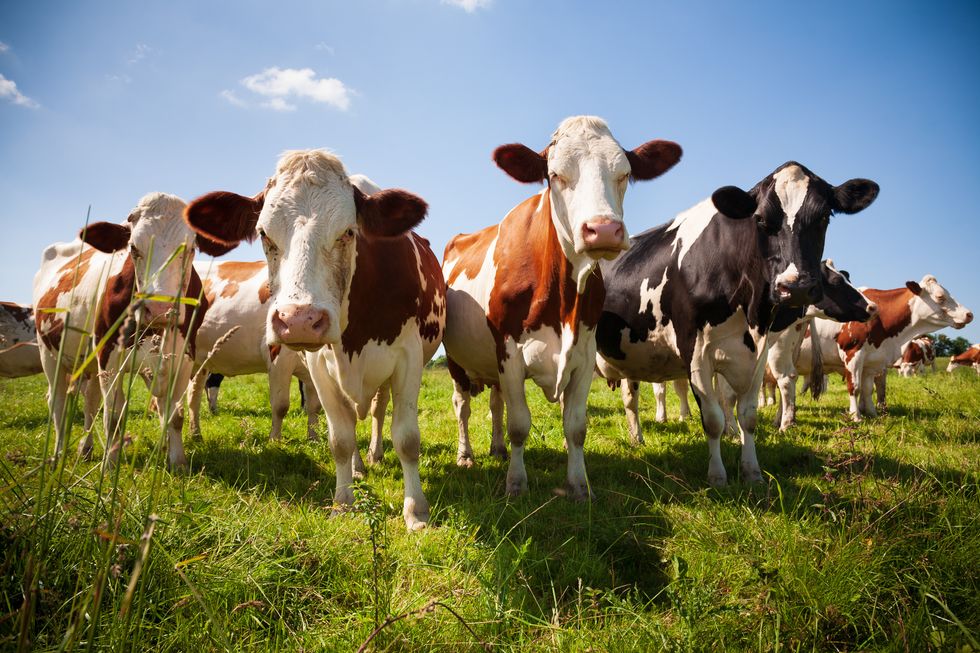
Animals kept in dense and often enclosed herds are more likely to transmit the disease
|Getty Images
Too close for comfort
The first concern relates to farming practices.
Cows are typically reared in "high densities", explains Doctor Ed Hutchinson, Senior Lecturer of Virology at the University of Glasgow.
Animals kept in dense and often enclosed herds are more likely to transmit the disease.
And, unlike poultry, there's no talk of culling cows (they cost around $2,500 each and are not becoming seriously ill) notes Doctor Hutchinson.
Another cause for concern is that intensive farming can make cattle more stressed, thereby lowering resistance to the disease, warns Steve Hinchcliffe, Professor of Human Geography at the University of Exeter.
Many cows will be fed on non-pasture sources, which changes the health and quality of the herd, leaving them vulnerable to infectious diseases, warns Professor Hinchcliffe, who recently led a study on the risk intensive farming poses to pandemics.
Furthermore, though the common perception is that these farms and herds are closed (i.e. no movements between farms or herds), production involves large-scale movements of herds to take advantage of climate and pasture, the professor explains, adding that cattle transport may account for the "big jump" in cases from Texas and New Mexico to Ohio.
There is a lot of movement of calves from dairy farms back to beef and dairy veal producers, the prof tells GB News, adding: "The headline is that these farms aren't closed and secure: they are economically dependent on movement."
This poses a logistical challenge to surveillance and leads to lapses in biosecurity, with many cases likely going undetected.
It's all about the journey, not the destination
How H5N1 is spreading is making virologists nervous.
The virus has not achieved human-to-human transmission but cows are far more closely related to us than birds.
In 2009, scientists sequenced the genome of cows and found domesticated cattle share about 80 per cent of their genes with humans.
To make the leap from birds to mammals, the virus has had to acquire adaptations that, as Dr Hutchinson puts it, are "finely tuned to the specifics of each species".
This includes "getting better at copying its genome within host cells", the virologist notes, adding that "we can see mutations associated with that occurring with this virus".
Once a virus gains access to a host cell, it generates abundant copies of its genome, and, through packaging these copies, a virus continues to infect new hosts.
Virologists are now closely watching to see if H5N1 acquires adaptions that enable it to bind to T cells and overcome other immune system barriers.
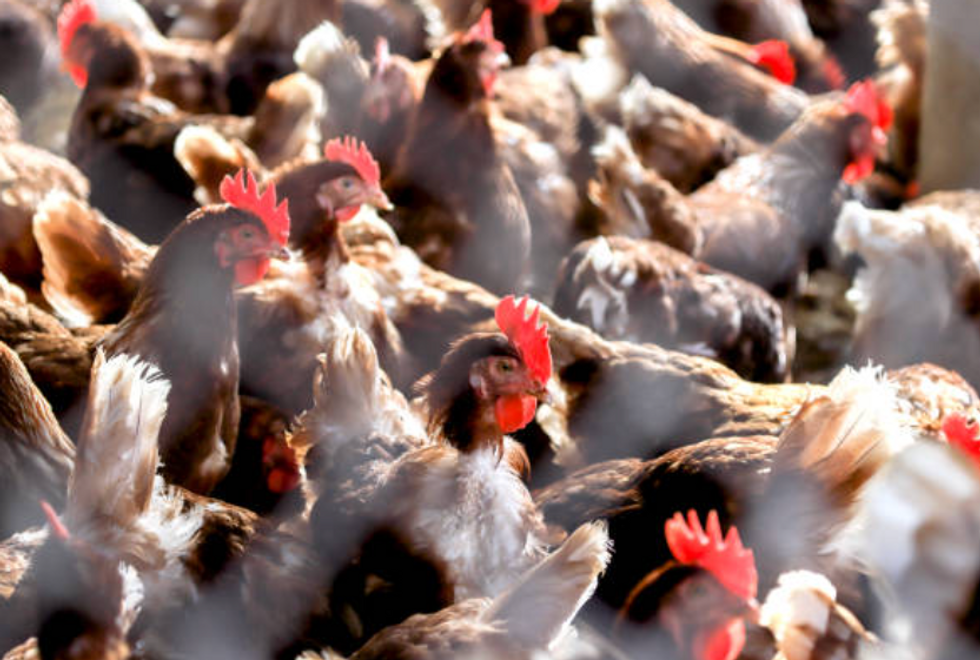
To make the leap from birds to mammals, H5N1 has had to acquire adaptations that make it better at spreading
|Getty Images
Studies have suggested that the main transmission route in cows is through infected milk, which is contaminating milking equipment.
This is ringing alarm bells as people spend a long time working on dairy farms and the general population consumes milk in large quantities.
Thankfully, commercially available milk is pasteurised - a process that kills harmful bacteria and viruses by heating milk to a specific temperature for a set period of time.
However, in April, The Food and Drug Administration (FDA), found one in five milk samples from grocery stores tested positive for bird flu.
Milk samples from areas with infected herds were more likely to test positive.
Although the findings are concerning, it doesn’t necessarily mean the milk contains a live virus that could cause an infection.
The viral particles detected by highly sensitive qPCR tests were likely to have been remnants of viruses killed during the pasteurization process.
However, not all milk is pasteurised.
A fast-growing and influential movement in America is trying to make the consumption of raw milk more palatable.
There's always been fringe support for drinking raw milk - think new-age hippies - but its libertarian hue is also winning over Republicans.
GOP legislators and regulators have backed the movement in the last few years, passing laws in Iowa, Montana, North Dakota, Alaska, Georgia and Wyoming since 2020 that legalise the sale of raw milk on farms or in stores.
This is "very unfortunate timing", claims Doctor Hutchinson, because the "more times you give the virus a chance to roll the dice" and get better at growing in humans, the risk of it adapting to humans becomes greater.
Infected milk is not the only possible route of transmission.
Scientists have raised concerns that H5N1 could start spreading effectively in cows through the respiratory system.
Should this happen, it would be harder to control and the risk of it spreading to humans would increase, given the close contact that cows have with people.
Preliminary research suggests airborne transmission is possible.
In a study published in the journal Nature, authors used mice and ferrets - two small mammals commonly used to study influenza virus disease in laboratories - to investigate the behaviour of an H5N1.
Researchers have previously shown that, in principle, H5N1 bird flu viruses can gain the ability to spread through the respiratory route in mammals.
In this case, when they compared their cow flu isolate to bird flu they found that it had already begun to gain some of the properties that are associated with the ability to spread effectively through respiratory infections in humans.
To be clear, it does not appear to be doing this yet, and none of the human cases so far reported have shown signs of onward transmission.
Although it is good news that cow flu cannot yet do this, these findings "reinforce the need for urgent and determined action to closely monitor this outbreak and to try and bring it under control as soon as possible", says Doctor Hutchinson.
The other fear is that H5N1 is several adaptations away from deploying a trick known as 'gene swapping'.
Take a virus such as the seasonal flu, which has grown adept at spreading in humans.
"We all have immunity to it, so we're able to more or less keep it under control," explains Doctor Hutchinson.
So far, so good. Then suppose you get infected with a virus from a non-human source, such as H5N1 from cattle.
"We don't currently have immunity to this virus, but we're also not the ideal host for it, so if it gets into us, it's not going to replicate very well," Doctor Hutchinson continued.
Now, imagine both of those viruses infect a human organism at the same time and give birth to a child virus.
By inheriting genes from both human and non-human viruses, this "progeny virus" could acquire the lethality of H5N1 and the transmissibility of a common respiratory virus, thereby enabling it to spread.
Historically, this is how influenza pandemics have started, by "leapfrogging" many steps in the adaptation to humans by swapping genes back and forth, warns Doctor Hutchinson.
Amplifying these concerns is that tests of people across the US have found that few have antibodies against today’s strain of H5N1.
This implies that “most of the population would be susceptible to infection from this virus if it were to start infecting people easily”, according to the US Centers for Disease Control and Prevention (CDC), which ran the tests.
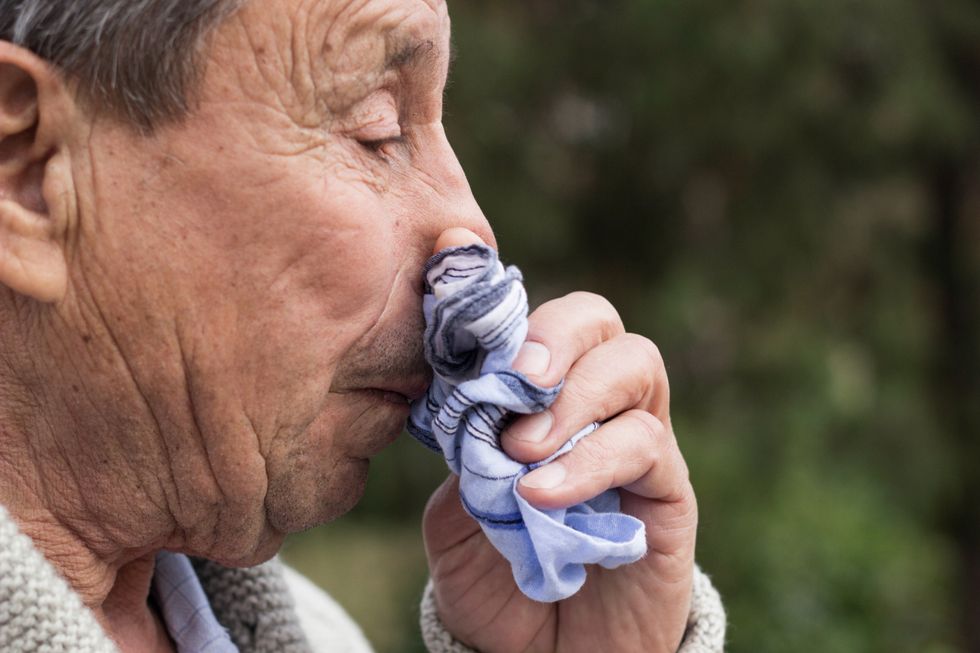
H5N1 bird flu viruses could gain the ability to spread through the respiratory route
|Getty Images
Don't panic...yet
The World Health Organization (WHO) recorded 463 human deaths among 888 cases of bird flu between January 2003 and March 2024, putting the case fatality rate at 52 percent - but this figure may be misleading.
Since 2022, only a small number of human infections have been reported and many mild cases have likely gone undetected, which casts doubt over this statistic.
The current public health risk remains low and is being constantly monitored.
The CDC is using its flu surveillance systems to monitor for H5 bird flu activity in people, including wastewater surveillance that has been used with Covid-19.
As of July 19, 2024, these systems currently show no indicators of unusual flu activity in people, including avian influenza A (H5N1) viruses nor any unusual trends in emergency department visits associated with influenza or potentially related symptoms at the national, state, or local levels.
A spokesperson from the UK Health Security Agency (UKHSA) told GB News that the current risk to the UK population from influenza A(H5N1) virus is "very low" but "we continue to monitor the situation closely alongside Defra, DHSC, Animal and Plant Health Agency and Food Standards Agency."
As part of its routine preparedness for human avian flu cases, the UKHSA also carries out preparatory work around surveillance, modelling, guidance and testing in line with His Majesty's Government (HMG) priorities.
Similar disease risk assessments, transmission modelling and outbreak predictions are being performed across the world.
Because vaccination is a "cornerstone" of interruption of transmission and disease prevention, there are intensive efforts from multiple countries to prepare for this contingency, according to David A Schwartz, a medical epidemiologist and pathologist.
Many countries, including America, are stockpiling H5N1 vaccines as part of their contingency plans and new ones are in the pipeline.
In May, WHO initiated a review of available influenza candidate vaccines and confirmed that they would work against the H5N1 virus circulating in cattle.
“Although the current public health risk is low, WHO is operating in a constant state of readiness for a potential influenza pandemic,” said Maria Van Kerkhove, who heads epidemic and pandemic preparedness and prevention at the WHO.
Last month, the European Commission purchased roughly 700,000 doses of a flu vaccine manufactured by CSL Seqirus, in Maidenhead, UK, with the option to buy another 40 million.
The vaccine protects against H5 strains of influenza A. Also in June, Finland began vaccinating people against avian influenza, focusing on high-risk workers at fur and poultry farms.
Across the pond, pharmaceutical giant Moderna is developing an mRNA vaccine against bird flu.
While the vaccine would target H5N1, the mRNA technology would allow manufacturers to pivot quickly if another new flu strain emerges.
The UK Government is ordering tens of thousands of doses of a vaccine to protect people in the event of an outbreak of bird flu in the human population.
Antiviral medications used against the seasonal flu in cattle can also be effective against the H5N1 bird flu virus, the CDC has said.
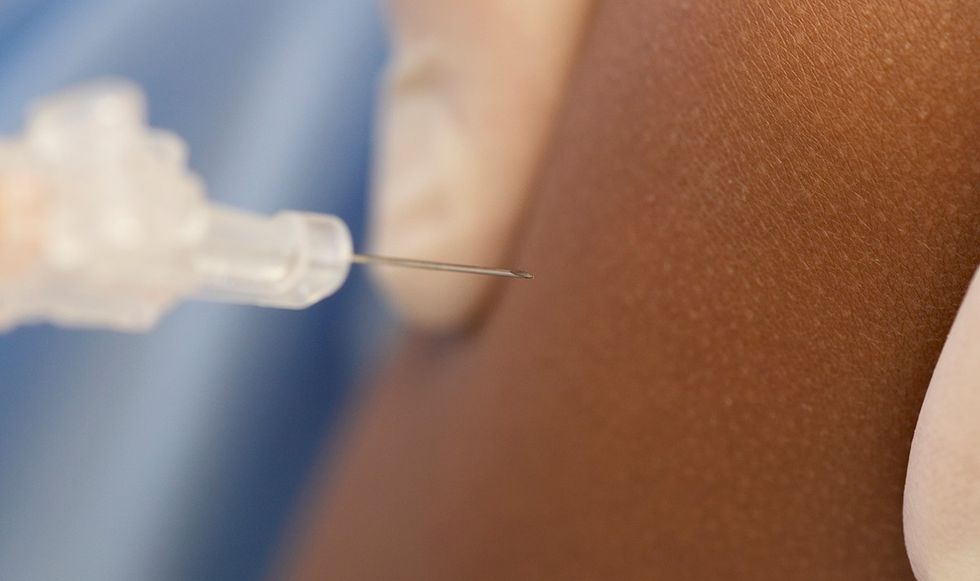
Many countries, including America, have a stockpile of H5N1 vaccines as part of their contingency plans
|Getty Images
Past immunity may also help.
Exposure to an older pandemic flu strain can defend against a newer one, says Michael Worobey, an evolutionary biologist at the University of Arizona in Tucson.
For example, in a 2009 pandemic caused by the swine-flu virus H1N1, 80 per cent of deaths were in people younger than 65.
Older generations were spared owing to immunity stemming from exposure to different H1N1 strains when they were younger.
Exposure to H1N1 during the 2009 pandemic and at other times could, in theory, provide some protection against the H5N1 strain on the rise today.
Beware of blindspots
Lessons have been learned since the last pandemic but many disease experts warn governments are still playing with fire.
Intensive livestock farming is one of the biggest blindspots.
Intensive farming is sometimes offered as a solution to pandemic risks as livestock can be kept separate from wildlife areas and it removes the need for small producers to farm "at the forest edge" but this logic is upside down, says Professor Hinchliffe of University of Exeter.
"Our analysis shows that intensive farming is contributing to environmental decline which can then help new and dangerous viruses to emerge and take hold in wildlife. If, or inevitably when, the wildlife make it onto farms (and infect livestock birds but also as we have now seen in the US, cattle), then we may be in trouble," he told GB News.
Biosecurity can improve things, such as better processes, buildings, cleanliness, and worker protection, but if you are farming at the economic margin, then "you are never far from being out of control", the professor warns.
Addressing this will require a sea change in thinking, Professor Hinchliffe said: "It's not just a question of better hygiene, it's the economy or pressures on farmers and rural lives that can make farming prone to disease and a problem for everyone's health."
For Doctor Hutchinson, it's about getting as "granular as possible" - tracking where cattle are being infected, preventing that infection from spreading and further learning what the roots of spread are.
This requires greater investment in public health infrastructure, from human case reporting to laboratories and emergency department department monitoring.
Public health messaging must also be improved to communicate the risks ahead of winter when influenza viruses will be circulating. This could increase the risk of H5N1 spreading in humans.
The NHS recommends people at higher risk of getting seriously ill from flu get vaccinated in autumn or early winter and urges anyone developing cold-like symptoms to self-isolate and stop the spread of infection.
Uncharted territory
How long the current stockpile of vaccines would last and how effective they would be in the event of a H5N1 human pandemic remains to be seen.
There are reasons to be concerned.
UK Covid-19 Inquiry chairwoman Baroness Heather Hallett recently said the UK was "ill-prepared" to respond to a pandemic.
Releasing her first report on pandemic preparedness and resilience in the UK, she said: “There will likely be a next time. The expert evidence suggests it is not a question of ‘if’ another pandemic will strike but ‘when’.
“The evidence is overwhelmingly to the effect that another pandemic – potentially one that is even more transmissible and lethal – is likely to occur in the near to medium future.
“That means that the UK will again face a pandemic that, unless we are better prepared, will bring with it immense suffering and huge financial cost and the most vulnerable in society will suffer the most."










